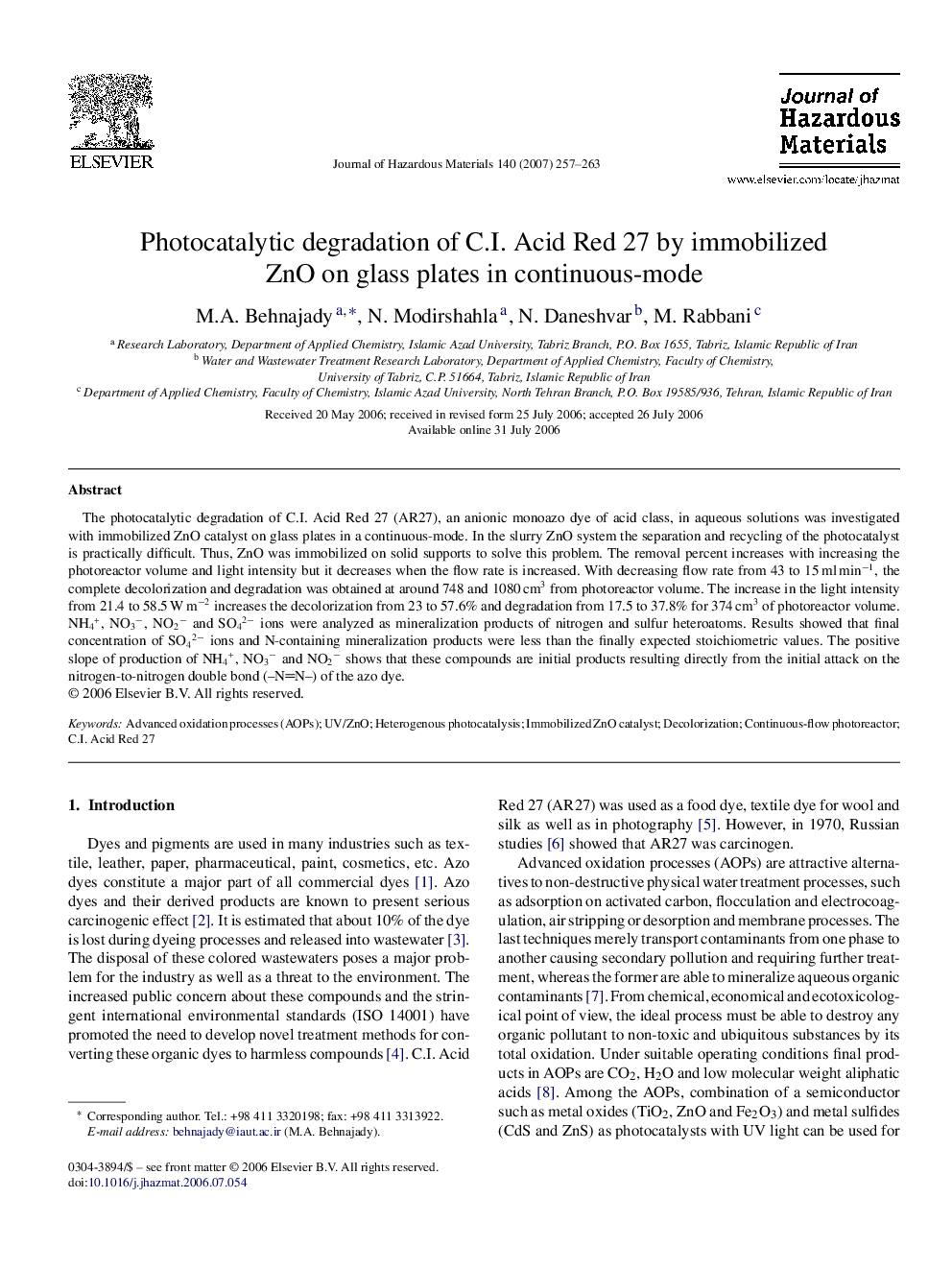| Article ID | Journal | Published Year | Pages | File Type |
|---|---|---|---|---|
| 585011 | Journal of Hazardous Materials | 2007 | 7 Pages |
Abstract
The photocatalytic degradation of C.I. Acid Red 27 (AR27), an anionic monoazo dye of acid class, in aqueous solutions was investigated with immobilized ZnO catalyst on glass plates in a continuous-mode. In the slurry ZnO system the separation and recycling of the photocatalyst is practically difficult. Thus, ZnO was immobilized on solid supports to solve this problem. The removal percent increases with increasing the photoreactor volume and light intensity but it decreases when the flow rate is increased. With decreasing flow rate from 43 to 15 ml minâ1, the complete decolorization and degradation was obtained at around 748 and 1080 cm3 from photoreactor volume. The increase in the light intensity from 21.4 to 58.5 W mâ2 increases the decolorization from 23 to 57.6% and degradation from 17.5 to 37.8% for 374 cm3 of photoreactor volume. NH4+, NO3â, NO2â and SO42â ions were analyzed as mineralization products of nitrogen and sulfur heteroatoms. Results showed that final concentration of SO42â ions and N-containing mineralization products were less than the finally expected stoichiometric values. The positive slope of production of NH4+, NO3â and NO2â shows that these compounds are initial products resulting directly from the initial attack on the nitrogen-to-nitrogen double bond (-NN-) of the azo dye.
Keywords
Related Topics
Physical Sciences and Engineering
Chemical Engineering
Chemical Health and Safety
Authors
M.A. Behnajady, N. Modirshahla, N. Daneshvar, M. Rabbani,
